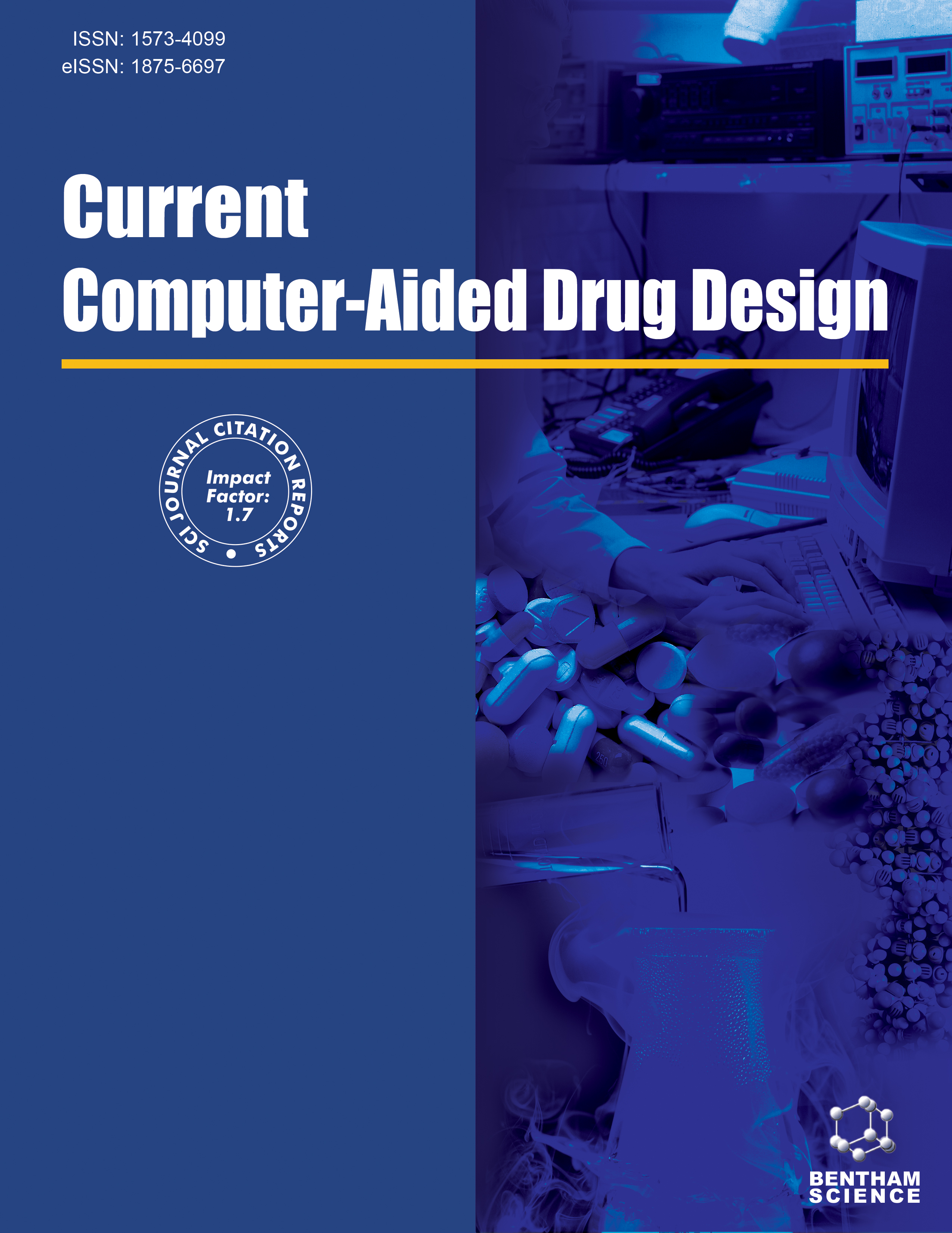- Home
- A-Z Publications
- Current Computer - Aided Drug Design
- Previous Issues
- Volume 8, Issue 3, 2012
Current Computer - Aided Drug Design - Volume 8, Issue 3, 2012
Volume 8, Issue 3, 2012
-
-
An Integrated Drug Development Approach Applying Topological Descriptors
More LessWe describe the opportunities posed by computer-assisted drug design in the light of two aspects of the current drug discovery scenario: the decline of innovation due to high attrition rates at clinical stage of development and the combinatorial explosion emerging from exponential growth of feasible small molecules and genome and proteome exploration. We present an overview of recent reports from our group in the fiel Read More
-
-
-
Chemometric Modeling of 5-Phenylthiophenecarboxylic Acid Derivatives as Anti-Rheumatic Agents
More LessAuthors: Nilanjan Adhikari, Dhritiman Jana, Amit K. Halder, Chanchal Mondal, Milan K. Maiti and Tarun JhaArthritis involves joint inflammation, synovial proliferation and damage of cartilage. Interleukin-1 undergoes acute and chronic inflammatory mechanisms of arthritis. Non-steroidal anti-inflammatory drugs can produce symptomatic relief but cannot act through mechanisms of arthritis. Diseases modifying anti-rheumatoid drugs reduce the symptoms of arthritis like decrease in pain and disability score, reduction of swolle Read More
-
-
-
Introduction to Molecular Topology: Basic Concepts and Application to Drug Design
More LessAuthors: Jorge Galvez, Maria Galvez-Llompart and Ramon Garcia-DomenechIn this review it is dealt the use of molecular topology (MT) in the selection and design of new drugs. After an introduction of the actual methods used for drug design, the basic concepts of MT are defined, including examples of calculation of topological indices, which are numerical descriptors of molecular structures. The goal is making this calculation familiar to the potential students and allowing a straightforward Read More
-
-
-
Modeling Anti-HIV Compounds: The Role of Analogue-Based Approaches
More LessAuthors: Hemant Kumar Srivastava, Mohammed H. Bohari and G. Narahari SastryThere has been a tremendous progress in the development of anti-HIV therapies since the discovery of the HIV virus. Computer aided drug design in general and analogue-based approaches in particular have played an important role in the process of HIV drug discovery. Structure-based approaches also have played a vital role in this process. There are a large number of studies reported in the literature where QSAR met Read More
-
-
-
Quantum Pharmacology for Infectious Diseases: A Molecular Connectivity Approach
More LessInfectious diseases are a major cause of global health, economic and social problems. Relationship between the infectious diseases and drugs designed to combat them can be understood by the Quantum Pharmacology approach. Quantum pharmacology which is an amalgamation of chemistry, quantum mechanics and computer modeling aims to understand the structure activity relationship of a drug. As compared to Read More
-
Volumes & issues
-
Volume 21 (2025)
-
Volume 20 (2024)
-
Volume 19 (2023)
-
Volume 18 (2022)
-
Volume 17 (2021)
-
Volume 16 (2020)
-
Volume 15 (2019)
-
Volume 14 (2018)
-
Volume 13 (2017)
-
Volume 12 (2016)
-
Volume 11 (2015)
-
Volume 10 (2014)
-
Volume 9 (2013)
-
Volume 8 (2012)
-
Volume 7 (2011)
-
Volume 6 (2010)
-
Volume 5 (2009)
-
Volume 4 (2008)
-
Volume 3 (2007)
-
Volume 2 (2006)
-
Volume 1 (2005)
Most Read This Month
Article
content/journals/cad
Journal
10
5
false
en


